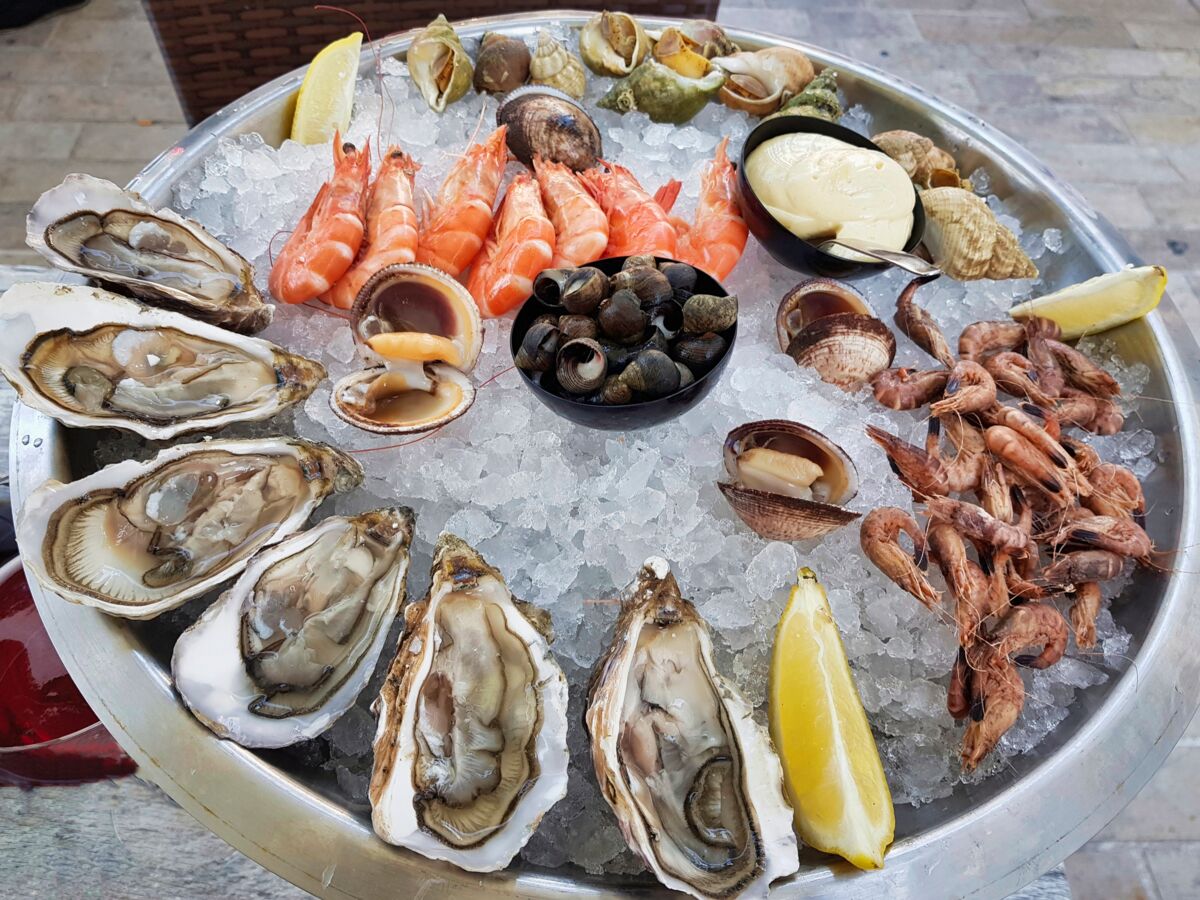Excellent sources of lean protein, seafood is also high in omega-3 fatty acids. They reduce the risk of cardiovascular disease and are allies for our brain.
the tellin
The pretty colors of its hull, stretching from yellow to blue, and its shine give it the air of a jewel. This small bivalve, less than 3 centimeters, lives buried in the sand, only in areas supplied with fresh water. Little known in France, the telline nevertheless reveals notes of hazelnut of great subtlety. After disgorging the shellfish, simply let them open over high heat with a little white wine, salt, pepper and a few bay leaves or flat-leaf parsley.
cake
The buff-colored crab is the most popular with French consumers and one of the largest in Europe, up to 30 centimeters and several kilograms. The species, which occupies the stony bottoms of the Atlantic coast, is active at night, feeding on crustaceans and small fish. At the market, it must be chosen alive, preferably caught in the pot. Like most seafood, its flesh is low in calories but rich in nutrients such as zinc and magnesium. The key is not to overdo the mayonnaise!
Lobster
We love this decapod renowned for the finesse of its flesh. Its rarity makes it a highly sought after dish. There are two species, which inhabit the North Atlantic. The European, with its bluish shell, is called “Breton lobster” in France. The American, with an orange belly, became known thanks to the “lobster roll”, this mayonnaise sandwich, born on the east coast, around 1934. In France, lobster remains the prerogative of great restaurants . In bisque, but also grilled or flambéed, in all sauces, from garlic butter to tomato-cognac!
The mussel
Popular and inexpensive, black shellfish served with golden fries are one of the great classics of French cuisine. With a star of national production: the bouchot mussel. According to legend, in the 13th century, an Irish sailor, the only survivor of a shipwreck, tried to survive on the French coast. He would have planted two wooden poles in the water and hung a net on them to catch fish and birds. Little by little, mussels would have colonized the installation. Since then, they have thrived on the Atlantic coast and in the English Channel.
The knife
This mollusk with an elongated shape, similar to that of a kitchen knife, is distinguished by its slightly sweet flavor. Its fishing is practiced on foot, during high tides. A few grains of salt placed in the visible holes in the sand bring these strange creatures up from the depths. After draining them in salted water, simply fry them in the pan with garlic and parsley butter.
Cuttlefish
At home, there is nothing to throw away! Body, tentacles and ink: everything is eaten in the cuttlefish. Its firm flesh can be prepared in the pan or, marinated, on the plancha. Appreciated around the Mediterranean, this cephalopod is eaten in tomato sauce in the Basque Country. Attention, blanch the animal for two or three minutes in boiling water to prevent it from having a rubbery texture in the mouth.
Where does this habit of eating oysters come from?
For a long time, we ate oysters only in months in R. The reason? Following food poisoning due to products having turned during transport, a royal edict of 1759 prohibited their fishing and their sale from April 1 to October 31. The objective was also to preserve the resource during the reproduction period. If refrigeration today avoids any poisoning, respect for seasonality remains topical.
Read also :
⋙ Accompaniment, drink: what to serve with lobster?
⋙ Overfishing alert! What fish and shellfish should you cook to preserve biodiversity?
⋙ Our tips for knowing if seafood is fresh
